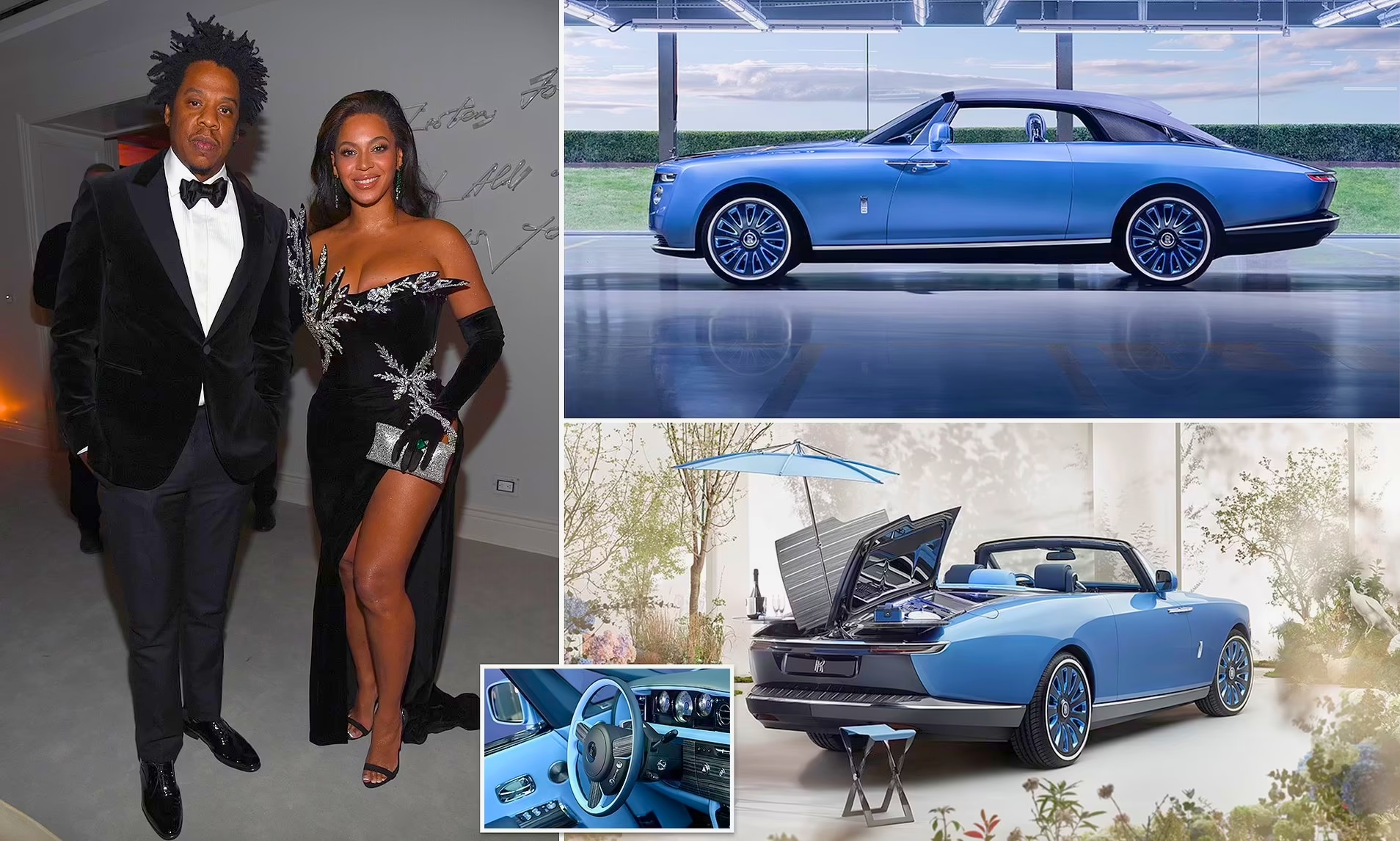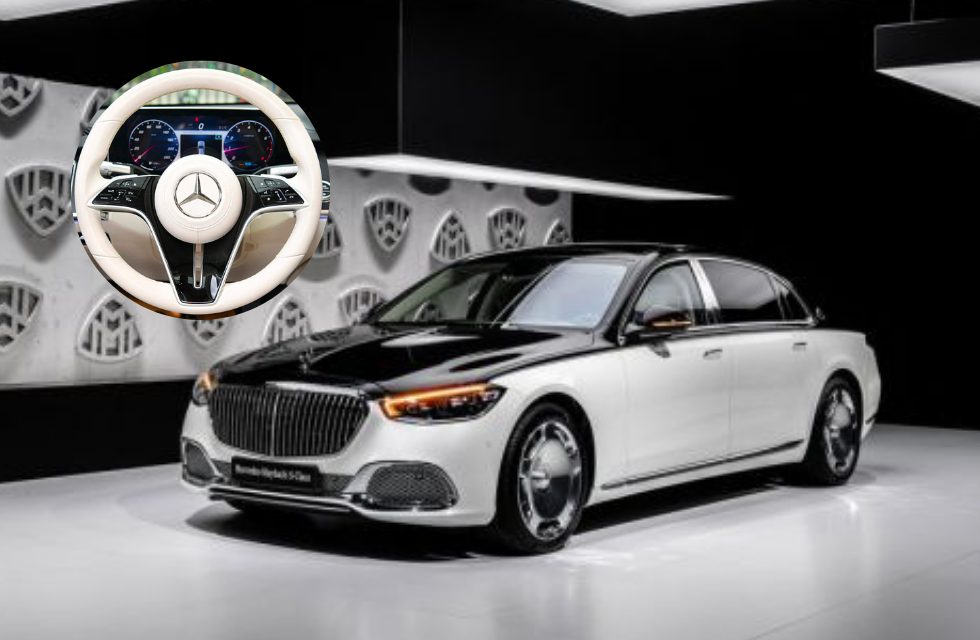Lamborghini has given a glimpse of what its first all-electric model could look like.
Called the Lanzador, the jacked-up sports car concept with two doors and four seats, has been unveiled at Monterey Car Week to showcase the direction the legendary Italian brand intends to go when it is forced to switch to battery power.
Here are ten things you need to know about it…
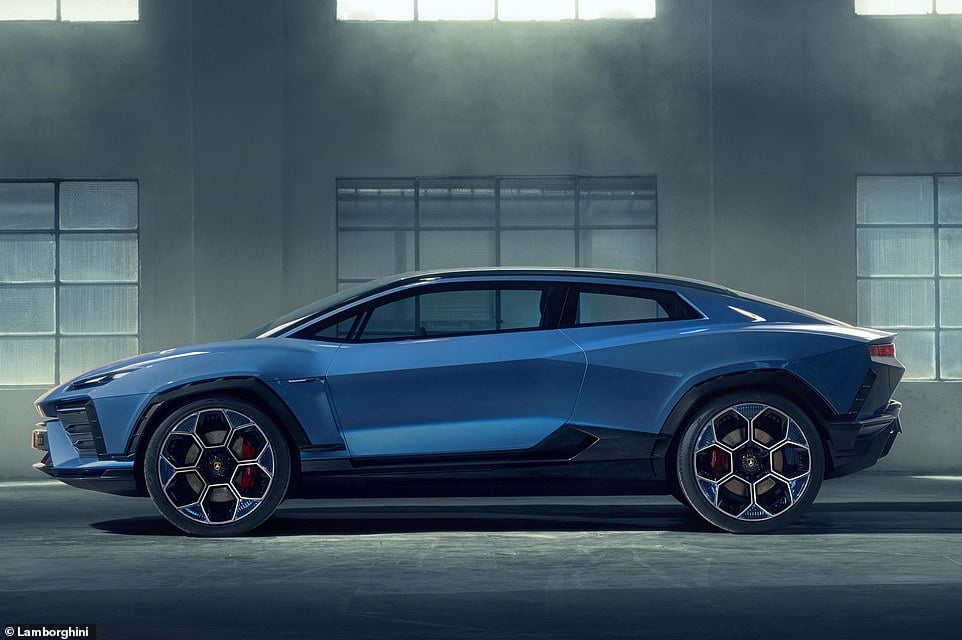
Video:
1. The world’s first ‘Ultra GT’ – and it is unlikely to replace Urus
The Lanzador concept is described by Lambo’s bosses as a ‘high ground-clearance GT with 2+2 seats’, two doors and a svelte, coupe-like body.
CEO and chairman Stephan Winkelmann says it will create a totally new car segment: the Ultra GT.
This new category of vehicle combines the ultra high-performance elements of its new Revuelto hybrid supercar – the successor to the Aventador – and the versatility of the Urus, the company’s incredibly successful SUV, which currently makes up almost three in five (58 per cent) of all Lamborghini sales.
And despite its futuristic – ‘spaceship-inspired’ – looks, the concept very much previews the production version we’ll see in showrooms.
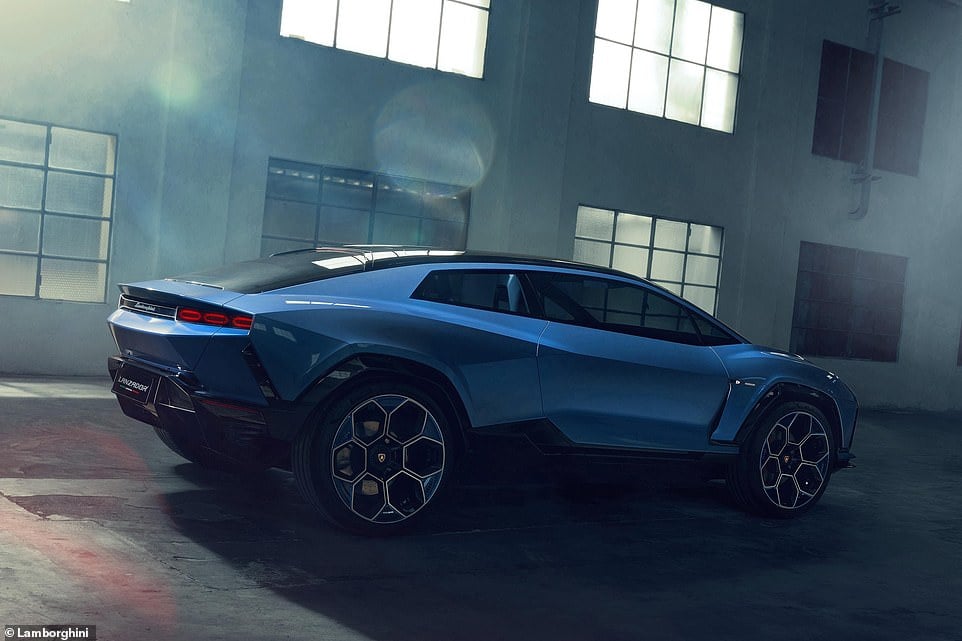
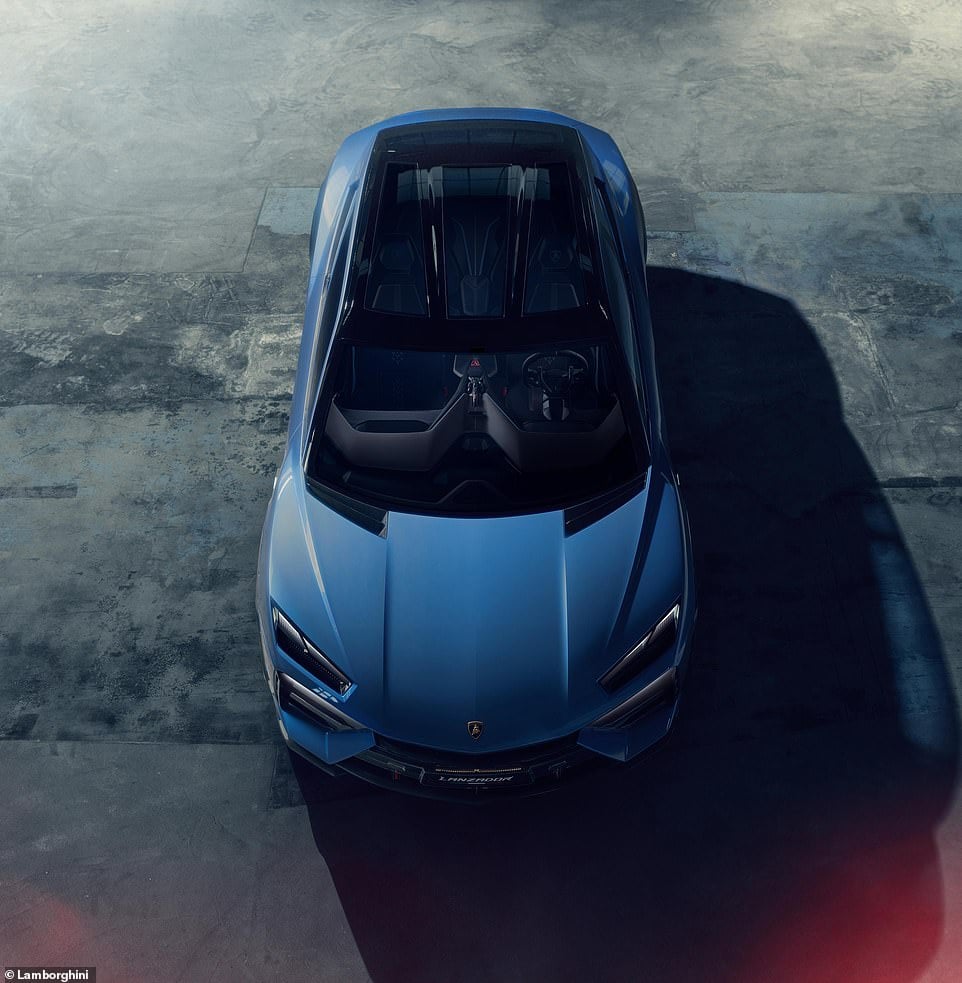
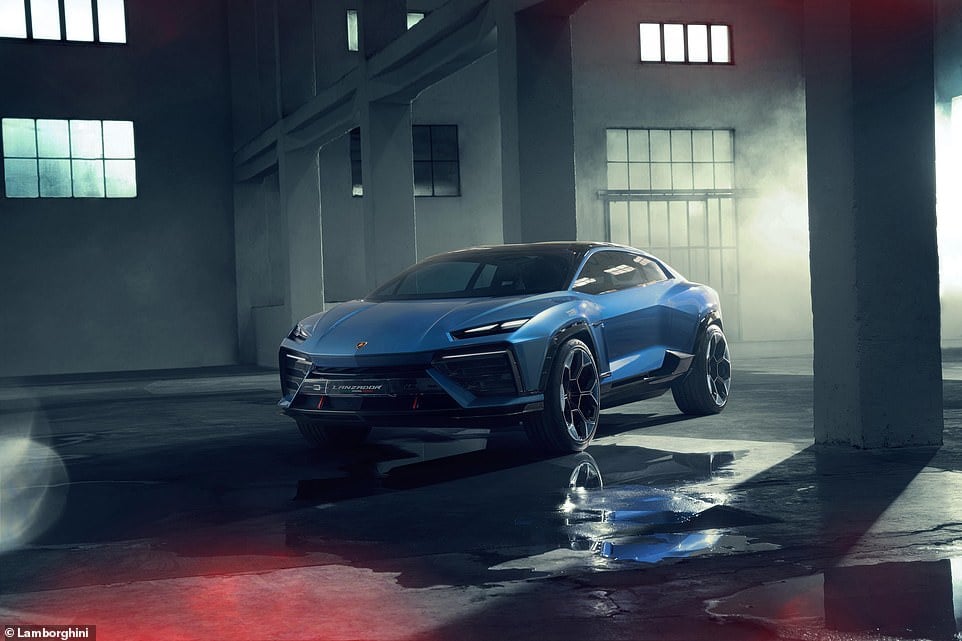
Mitja Borkert, the man in charge of penning Lanzador, says the design started out as supercar but was then transitioned into a jacked-up vehicle to create a ‘true pilot’s driving position’, which he says is similar to the off-road Huracán Sterrato.
Look closely and you’ll see plenty of influence from other existing models in the Lambo line-up, too.
For instance, the slim headlights and hexagonal-shaped brake lights mimic those of the Countach LPI 800-4.
From the side profile, the shape is unmistakably Lamborghini, though with a roof height of around 1.5 metres, it will be marginally lower than the Urus.
And for this reason, it’s unlikely to be a direct replacement for the popular SUV. In fact, a Urus hybrid is widely expected in the next 12 months, which will use the same platform as Porsche’s all-new Cayenne Turbo S E-hybrid, and could see it remain on sale alongside the Lanzador when it arrives.
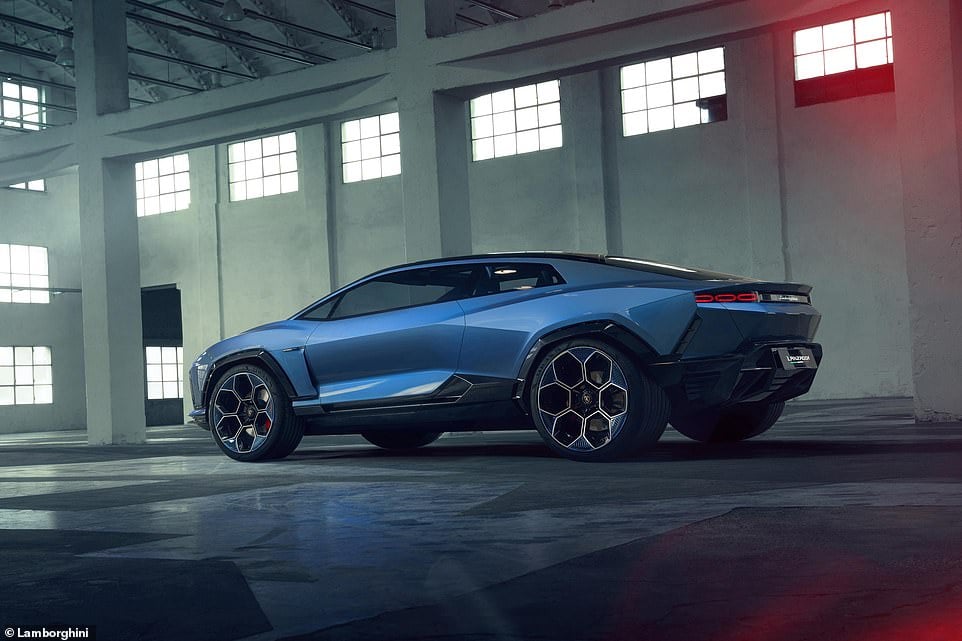
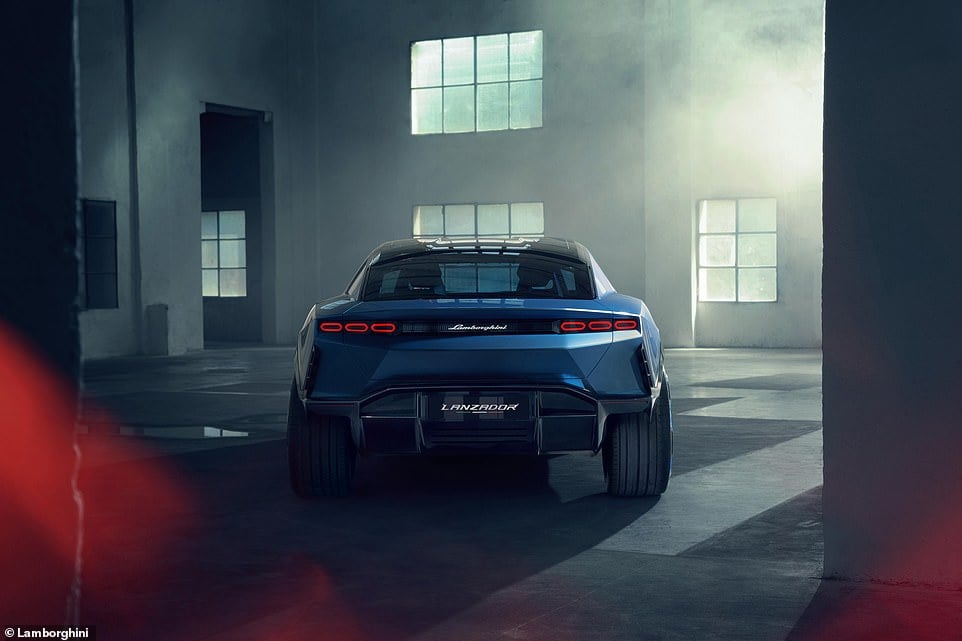
2. Lanzador has over a megawatt of power – what’s that in horsepower, you ask?
The Lanzador has a maximum power output of over one megawatt. That’s 1,341 horsepower, which is almost three times that of a Tesla Model 3 Performance.
All of this grunt will be delivered to the four wheels by a pair of electric motors – one on each axle – to provide permanent all-wheel drive.
This will be boosted by active e-torque vectoring that can react in milliseconds to determine the precise amount of torque needed for each side of the rear axle and rear-wheel steering, meaning the large – and likely extremely heavy – two-door GT will be more agile than it’s dimensions suggest.
The system’s control element can calculate the necessary – or desired – torque to each axle individually within milliseconds, with the two motors differentiating and serving the left and right sides on the rear axle.
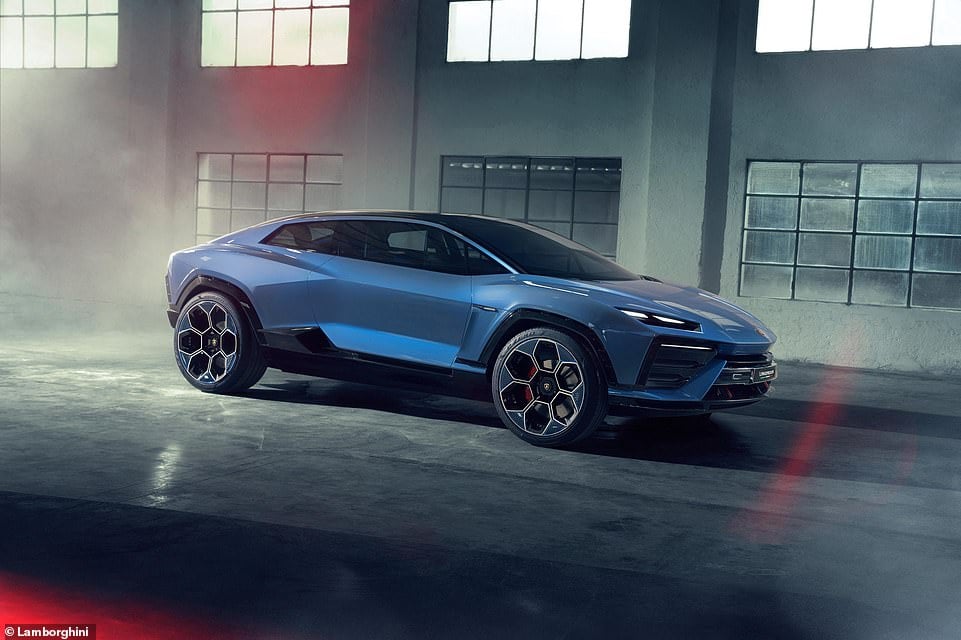
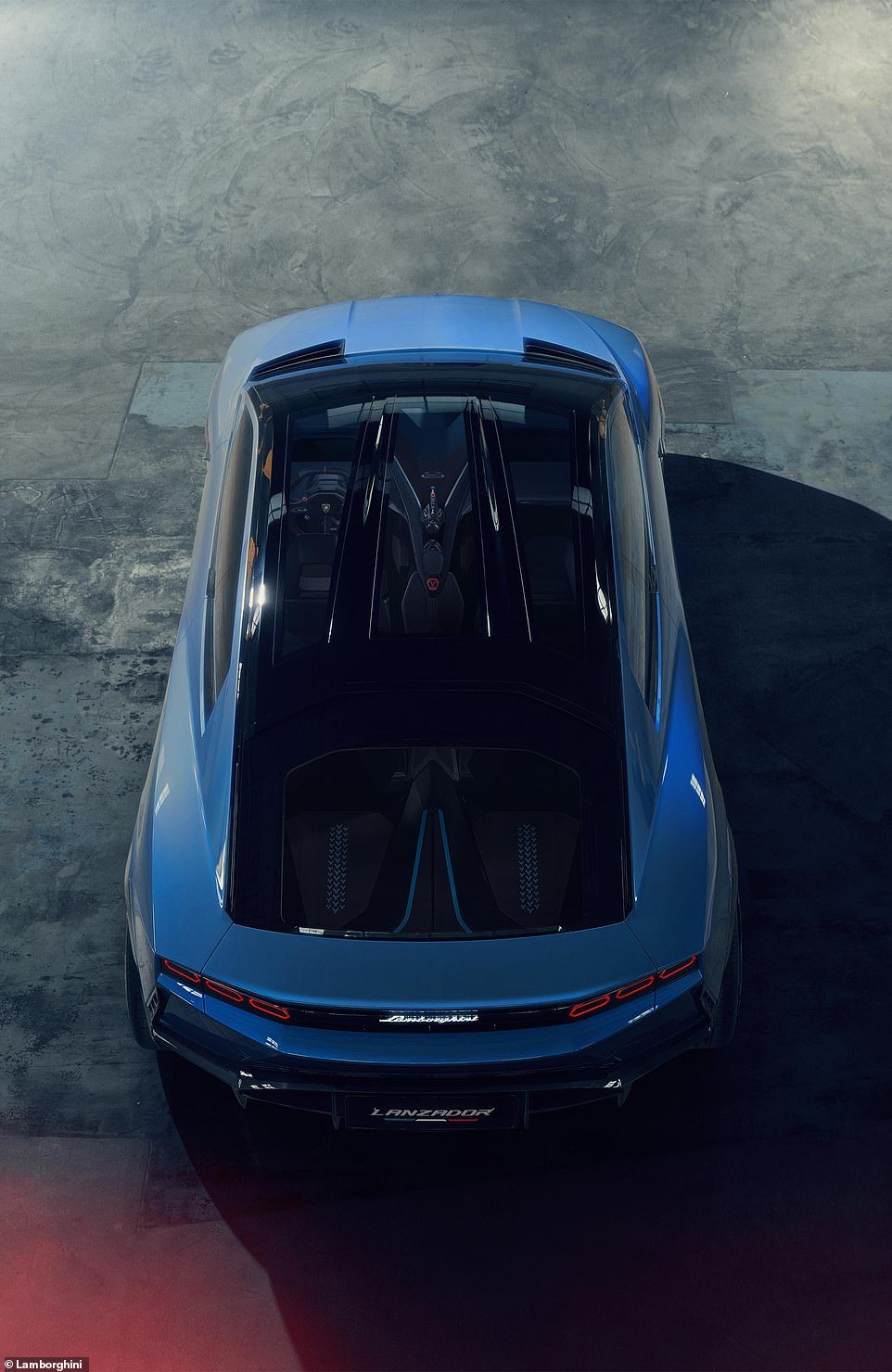
Lamborghini remains tight-lipped for now about its battery size, stating that it will have a ‘new generation high-performance battery’ to ensure a ‘long range’ between charges.
We are also yet to know any of its performance figures, though expect 0-62mph acceleration to be delivered in around three seconds.
3. Taking EV driving dynamics ‘to the next level’
Rouven Mohr, the company’s chief technical officer, promises it will have a suite of active-control systems that will make the Lanzador one of the most advanced passenger cars on the planet.
‘We are taking Lamborghini integrated driving dynamics control to a whole new level, which has not been possible for production sports cars before and offers our customers a completely new driving experience,’ he explained.
This includes a newly-developed Lamborghini Dinamica Veicolo Integrata (LDVI) driving dynamics control system that will use sensors and actuators to ‘create even finer and more precise driving behaviour’.
This means the different driving modes should feel noticeably different to each other.
4. More active aero than its supercars
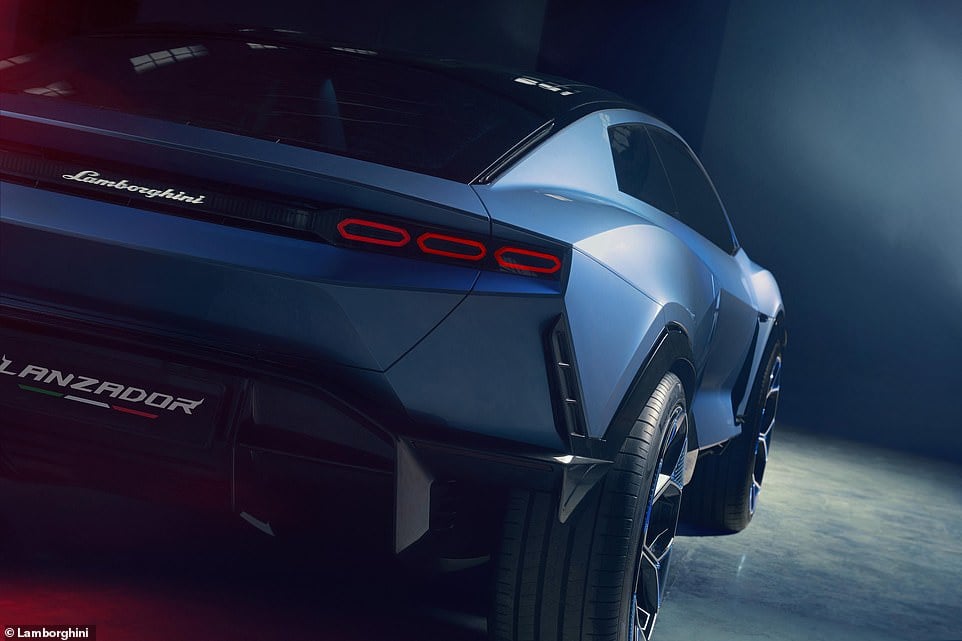
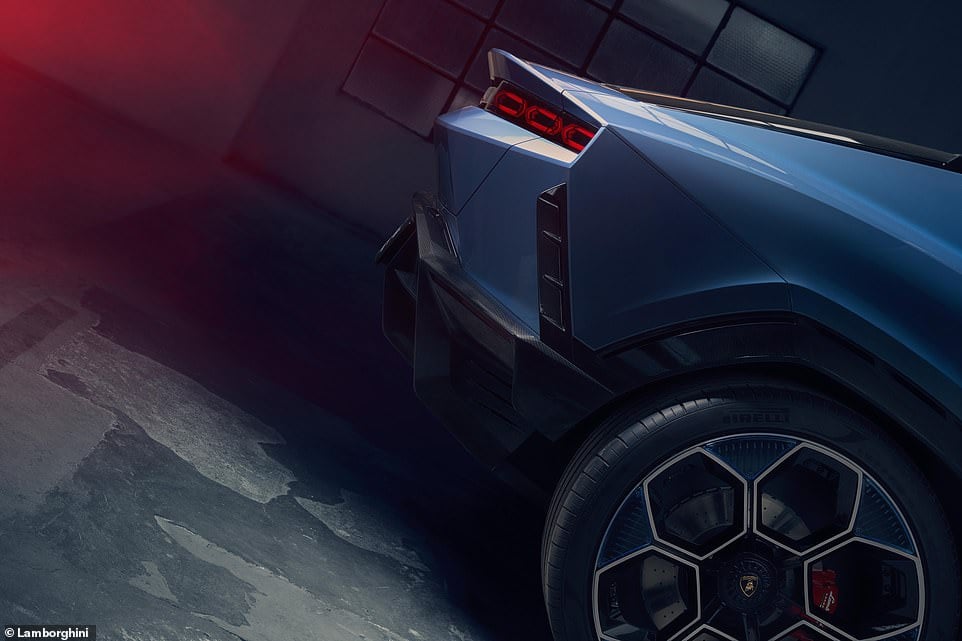
When you think of active aero, you think of auto-adjusting big rear wings on Lambo’s array of track-focussed supercars.
But the brand says active aerodynamics play a greater role in battery electric vehicles than in super sports cars.
This is because it can not only improve road holding in ‘Performance’ mode or extend the range per battery charge in its ‘Urban’ setting.
That’s why the development team has pinched the ‘Aerodinamica Lamborghini Attiva’ system already used in the Huracán Performante and Aventador SVJ, and bolted on new active aero devices in the front and rear.
This includes front air shutter and a movable splitter, which when deployed opens brake cooling ducts and cooling vanes to achieve the best performance.
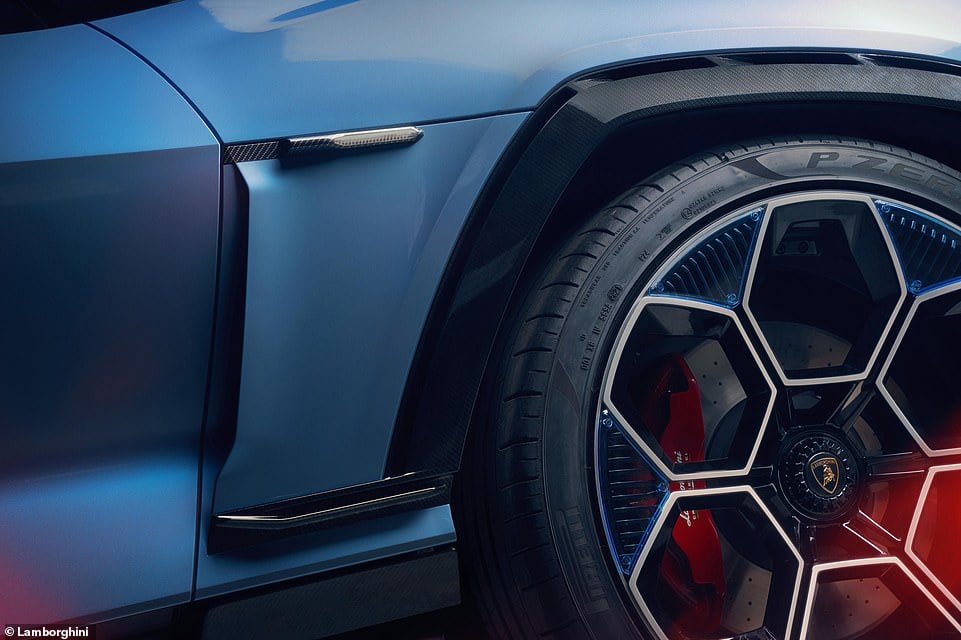
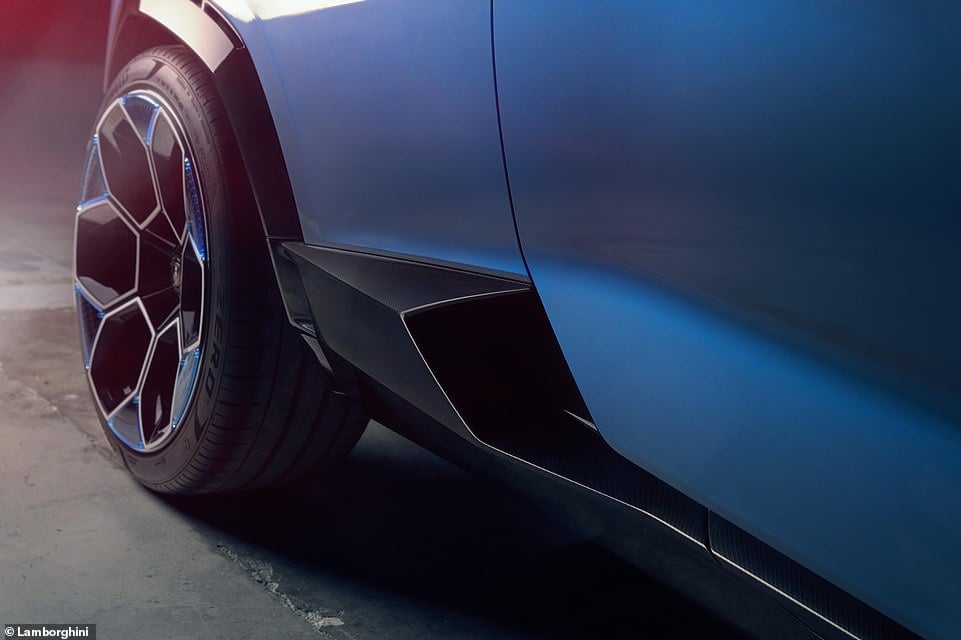
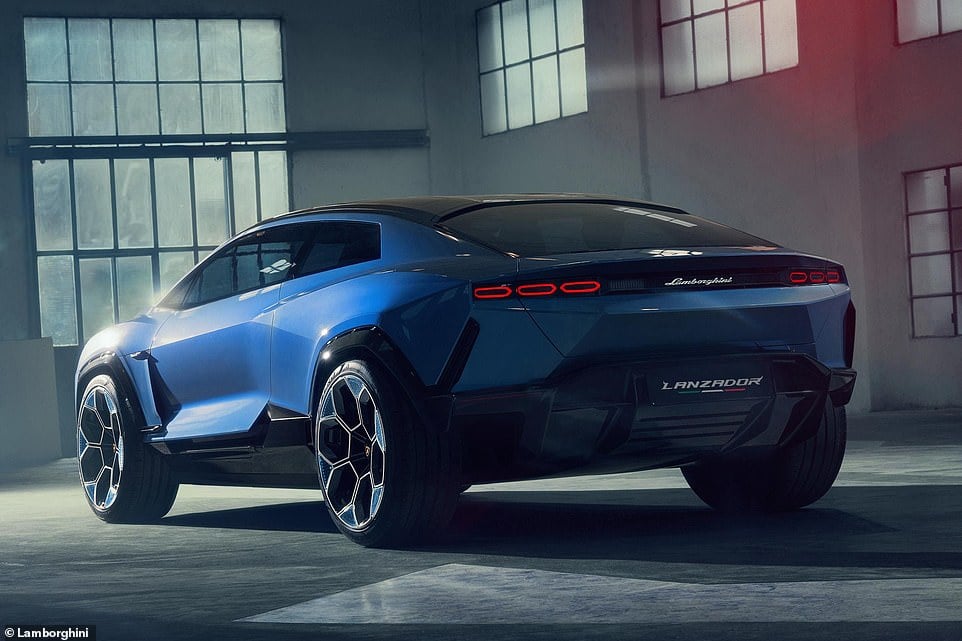
The S-Duct at the front, together with concealed louvres, increase ventilation and work alongside the air curtain to improve downforce.
Air outlets behind the front wheel arches prevent the dynamic pressure from lifting the front of the car at high speeds.
Even the 23-inch wheels have been designed to use aeroblades to minimise turbulence.
At the rear, depending on the drive mode, narrow airblades extend out of the sides and from the diffuser to improve aerodynamic downforce in conjunction with the flow-through rear blown spoiler.
The bodywork at the back is also designed to break the flow of air streamlining over the body in a ‘defined way’ to reduce drag and increase efficiency.
5. Active air suspension as standard


We’ve talked a lot so far about performance. But what about comfort?
Well, Lanzador should be able to deliver thanks to its active chassis and air suspension – features you find in high-end Range Rovers.
In the Lambo concept, the system tunes itself to every road situation or can be tuned by the driver to be rigid and more agile or cushioned for longer journey relaxation.
All of this can be adjusted en route via the controls on the steering wheel.
6. Wheelspeed Control to stop a megawatt of power tearing up the tyres
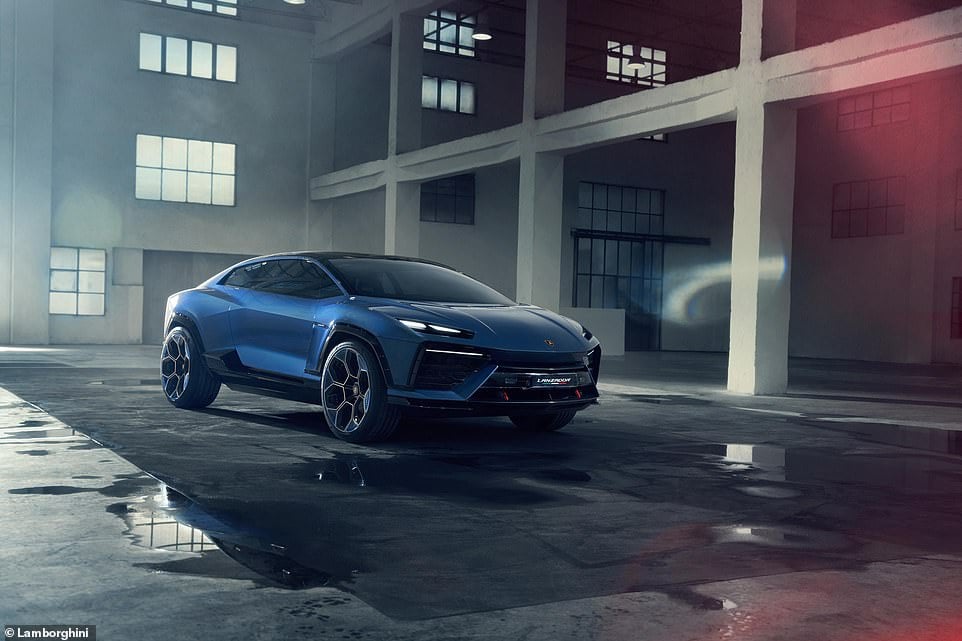
One interesting tech addition to Lanzador is ‘Wheelspeed Control’, which regulates power and force at the individual wheels.
Not only should this prevent owners from shredding rubber, it will also make corner turn-in more precise and direct and accelerating out of corners more manageable.
‘The combination of these systems raises the driving behaviour of the concept car to a new level compared to a super sports car with a combustion engine: it is an electric, super-intelligent Ultra GT,’ says Rouven Mohr.
7. An interior to make you ‘feel like a pilot’

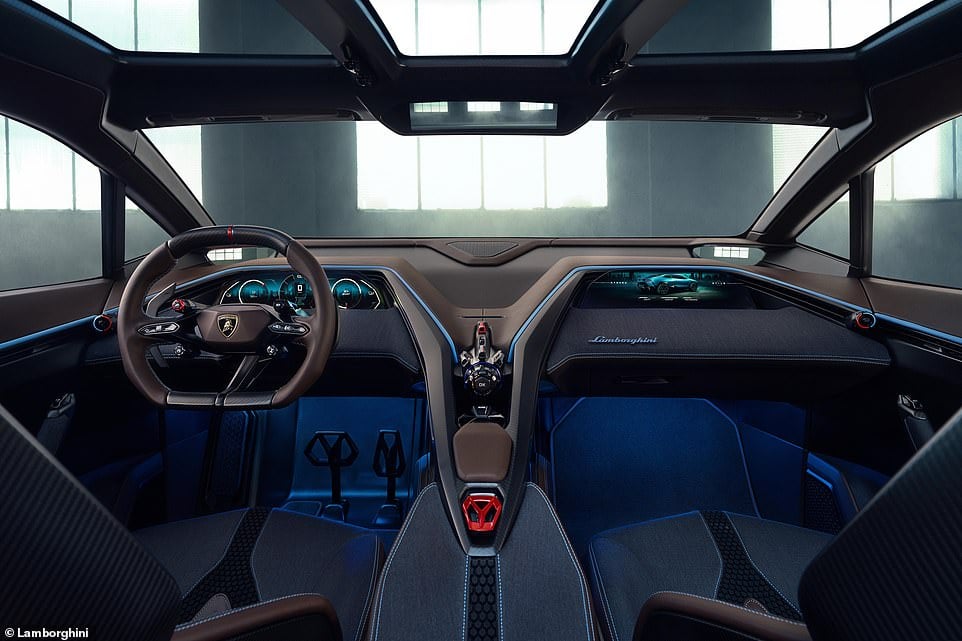
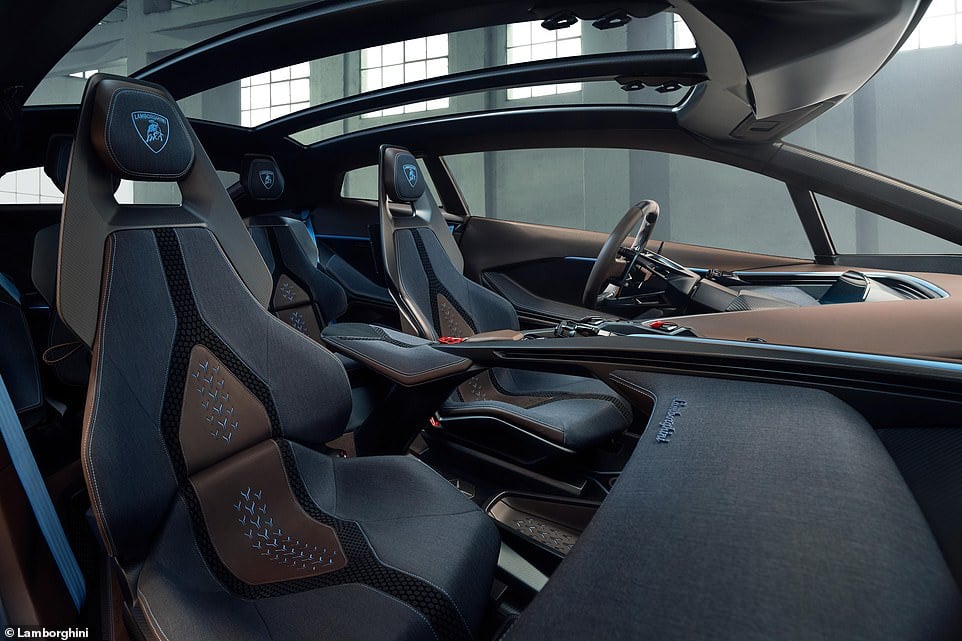
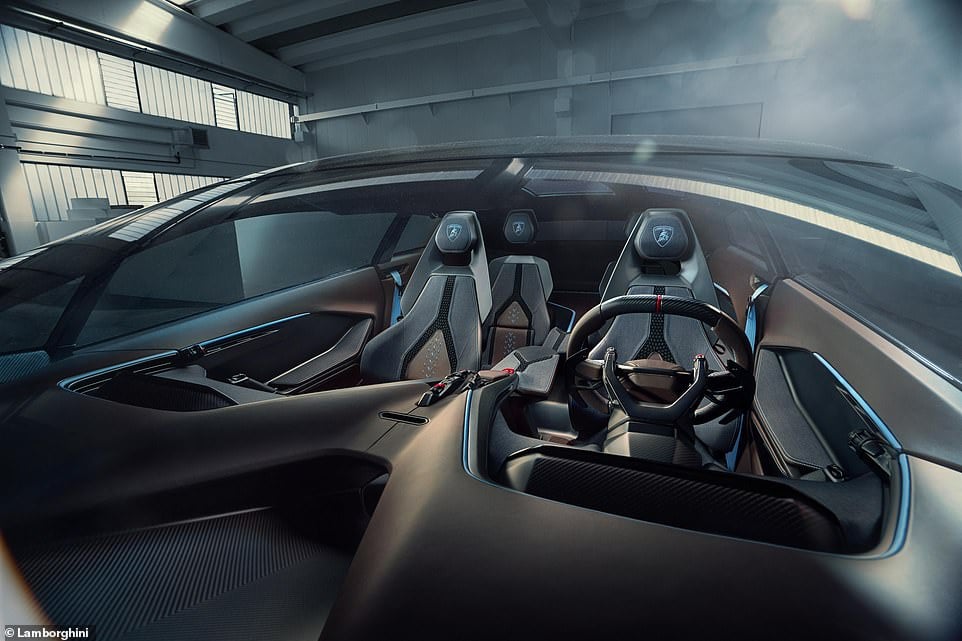
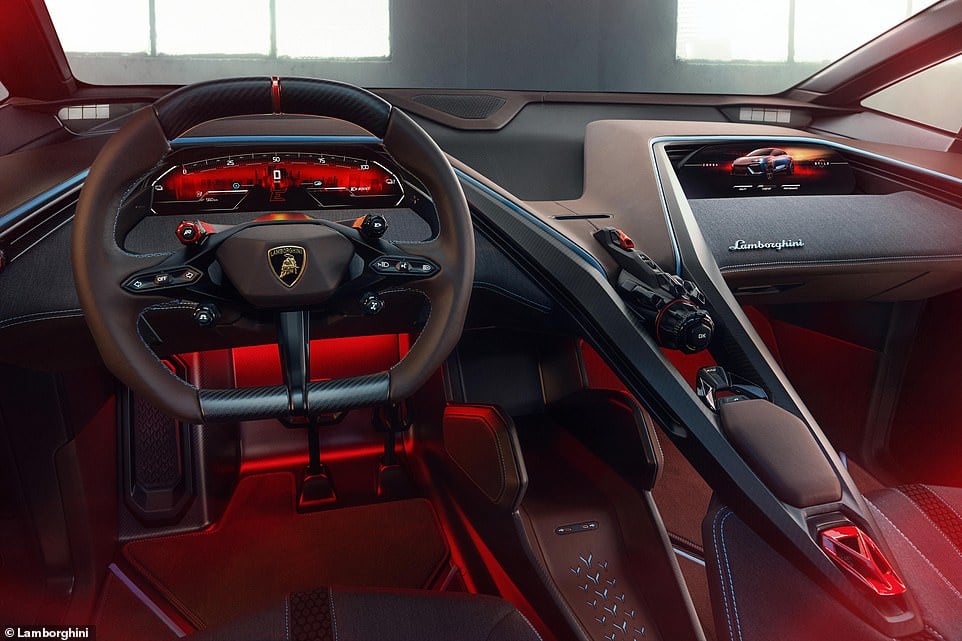
The interior layout strictly follows Lamborghini’s brief to ‘feel like a pilot’.
‘It takes the idea of a 2+2 GT but moves that a step forward, creating a 2+2 lifestyle concept where the rear space of the cabin can also be used for carrying all sorts of sports equipment or luggage,’ is what the Italian brand claims.
The interior’s pilot position – with the driver and front-seat passenger seated lower in the cabin – is defined by a slim dashboard that uses iconic design elements such as the large Y-shape used for the centre console bridge.
The front passenger also gets their own digital instrument screen, while those in the back get flip-out panels to control things such as the temperature settings and what’s being played on their display.
While it will come with the same seats you’ll find in its supercars, the cabin will be more practical for everyday use and should be relatively roomy.
One surprise addition is the rear seat headrests, which attach to the ceiling rather than the top of the chair backs.
8. A froot and other practical features
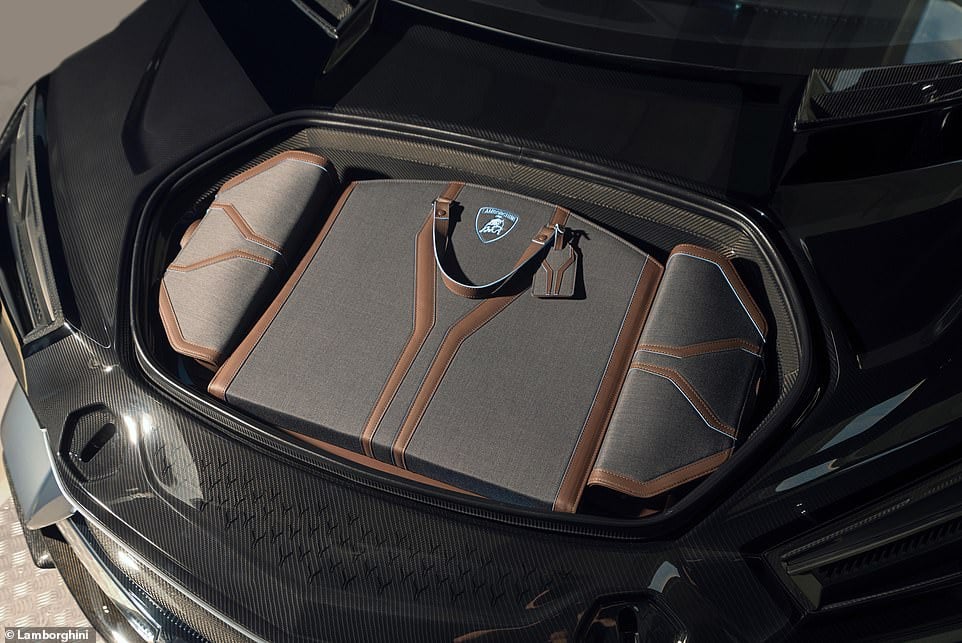
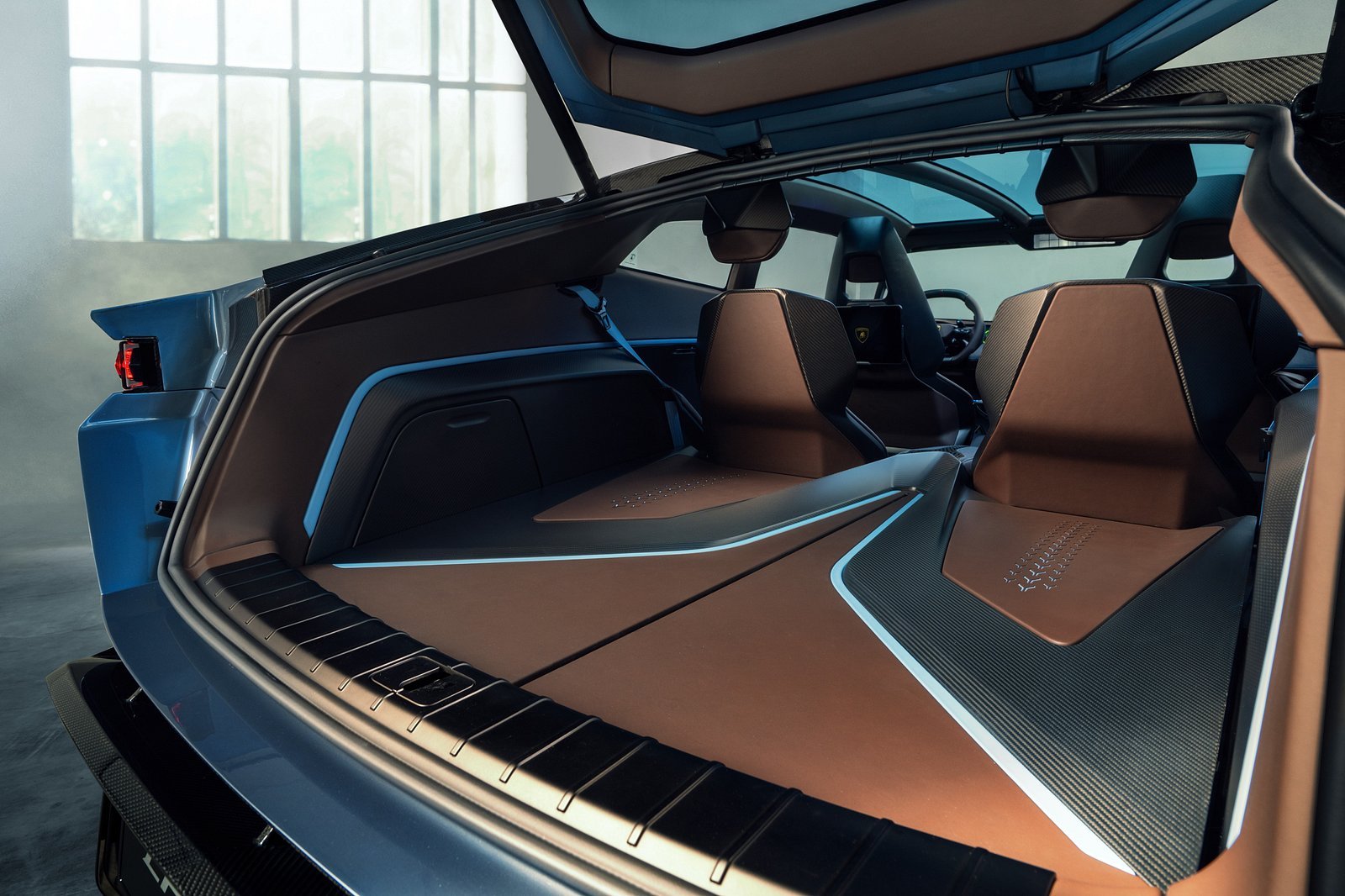
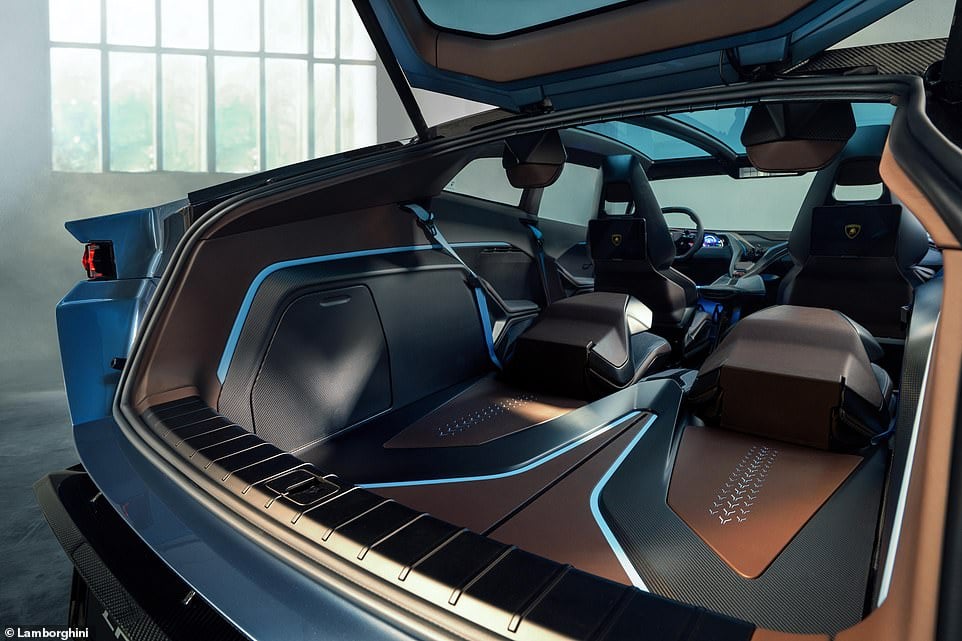
As with many electric cars, the elimination of a combustion engine means extra luggage space.
In this instance, it’s a ‘froot’ – a front boot – concealed under the short and steeply sloping front end.
Lamborghini says its large glass tailgate opens wide to provide lots of headroom while loading into the boot, and the adjustable rear seats and a variable luggage compartment in the rear make the concept car adaptable for every situation.
This includes a boot floor that can be lowered, and rear seats that fold forward to create a near flat loading space to provide van-like carrying space.
Another feature of the concept that could be carried over to production is the expansive glass roof, which stretches across the whole of the cabin.
9. Filled with sustainable materials
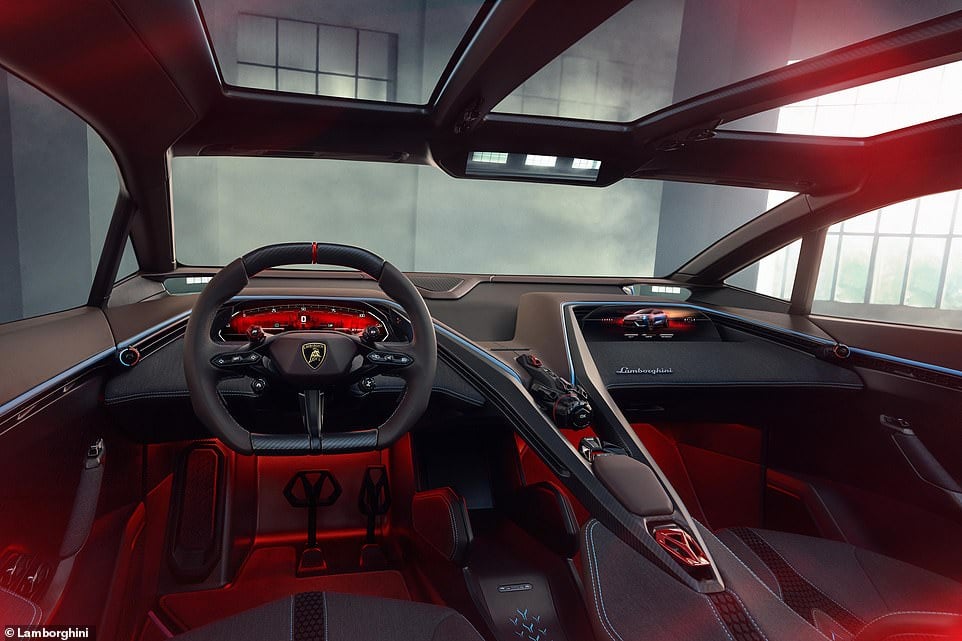
Lanzador will ‘elevate Lamborghini to a new level of sustainability,’ so the brand says.
The interior is made almost entirely of sustainable materials – all of which are produced in Italy.
High-end Merino wool dresses the dashboard, seats and door panels, while the coluored thread in the seats and soft-touch parts are made of recycled nylon and plastic.
Many of the non-visible plastics, such as the foam of the sports seats, are made of 3D-printed recycled fibres, while only sustainable leather is used throughout.
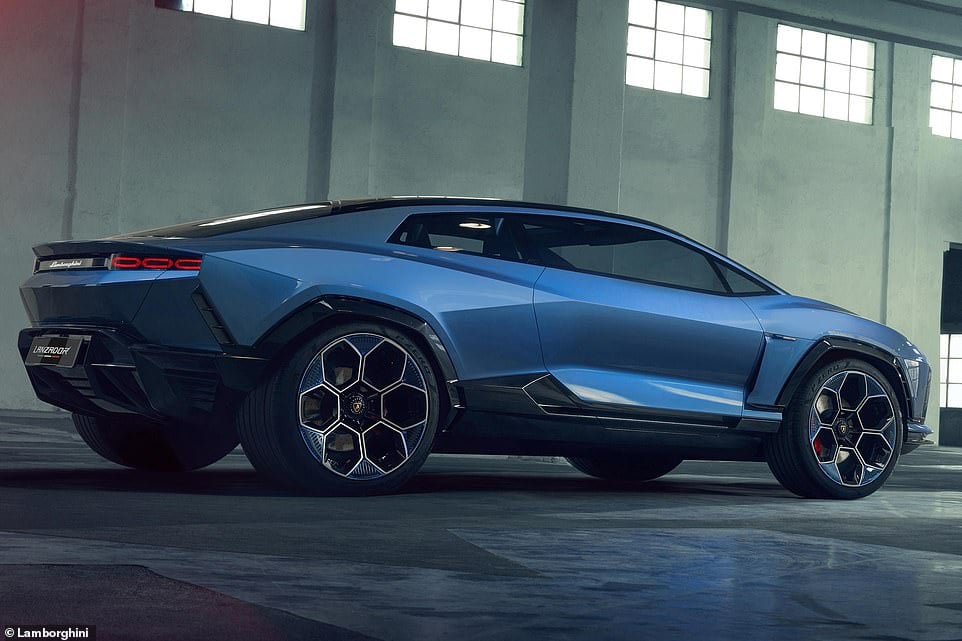
10. It will go on sale in five years’ time
The concept is the first glimpse into Lamborghini’s future, which it has planned out as part of its €1.9billion (£1.6bn) ‘Direzione Cor Tauri’ decarbonisation roadmap, which includes ‘electrifying’ its entire vehicle range from 2024 with hybrid powertrains, and from 2025 it wants to at least half the company’s CO2 emissions.
The Ultra GT will ‘deliver extraordinary performance from 2028’ and will be ‘at the forefront of its segment’, the maker says.
It also confirmed that showroom Lanzador will be built at its spiritual home in Sant’Agata Bolognese with the help with an increased workforce and an expanded site, which is included as part of its investment.
Share or comment on this article: Lamborghini’s Lanzador previews its first ELECTRIC model – ten things you need to know.

